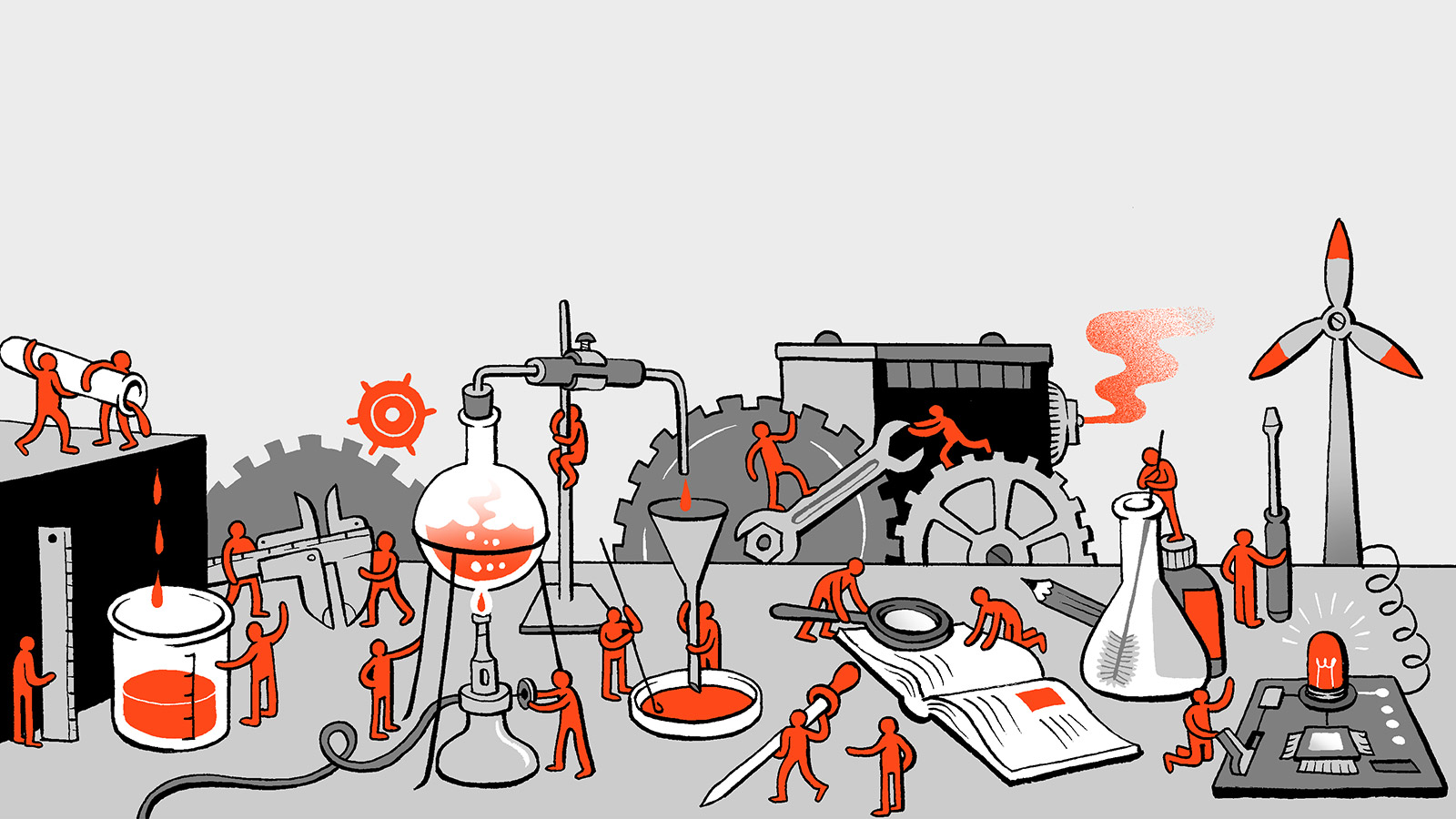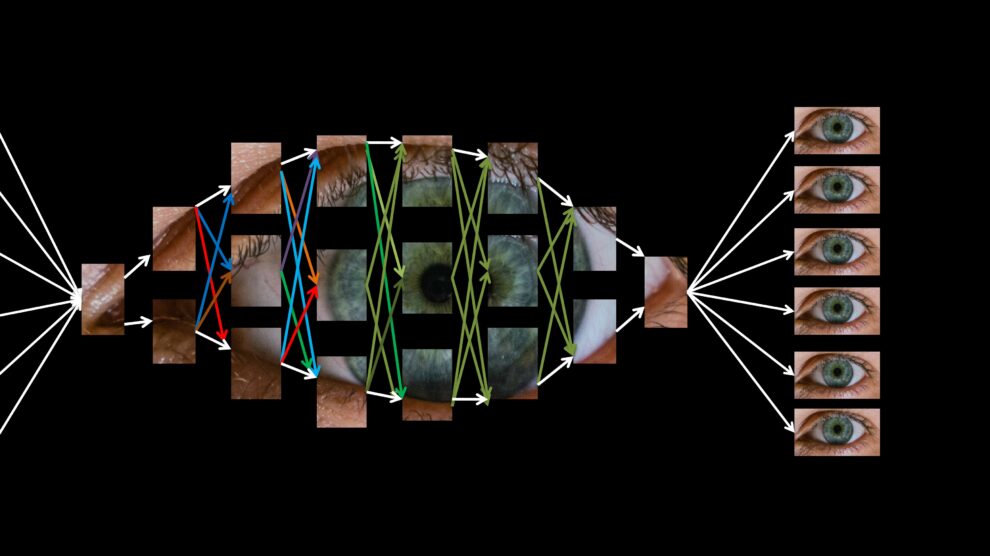The Politics of Imagination
By Nafis Hasan and Michael Gasser
Volume 23, number 2, People’s Green New Deal

A World on Fire
It is estimated that more than a billion animals burned to death in the bushfires that raged throughout Australia at the beginning of this decade. The end of the last decade was not merciful either; fires in the Amazon rainforest, the Democratic Republic of the Congo, and California devastated large swathes of land, destroying ecosystems and causing massive spikes in carbon emissions. How did it come to this—this raging inferno of a world, a steady stream of climate catastrophes against the backdrop of ever-increasing global warming? Who started the fire?
In her most recent book, On Fire: The (Burning) Case for a Green New Deal, Naomi Klein has the answer. Focusing on the United States and Canada, she leads us through the last decade of empty promises made by governments, as well as their failures to enact strict climate policies due to the influence of the fossil fuel industry and a growing right-wing populist movement. However, she does not stop there, arguing that it is capitalism—the entire economic and political system enabling this sort of inaction—that is at fault. At times intensely personal, Klein recounts her struggles to understand climate change denial, ecofascism, climate nihilism, and the ever present danger of the crisis itself. Drawing on her experiences organizing climate strikes and the Leap Manifesto in Canada, and on her encounters with activists, scientists, and clergy, Klein provides inspiration for what must be done to fight back against the fallacy of limitless growth driven by extractive capitalism and neo-colonialism. She proposes a solution in the form of a Green New Deal that recognizes the need to operate within the bounds of Earth’s resources while improving quality of life for everyone, a goal that can only be accomplished by cultivating solidarity and a collective purpose.
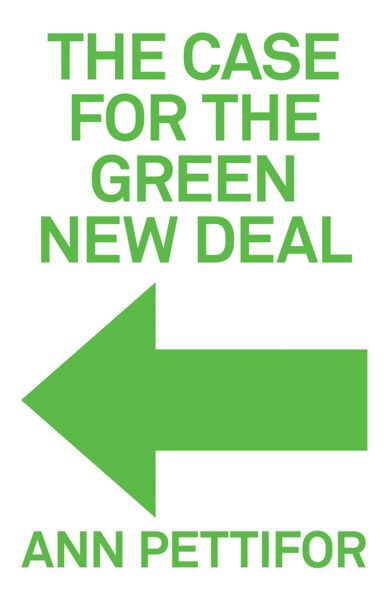
In her book The Case for the Green New Deal, the British economist Ann Pettifor blames the increase in emissions and the resulting climate crisis on “a self-regulating, globalised financial system that pours exponential quantities of unregulated credit” into financing fossil fuel infrastructure. She argues that unlimited credit creation, a direct result of financial deregulation, is driving the expansion of the fossil fuel based economy and therefore needs to be tackled in order to curb carbon emissions. She also points to the role of global institutions such as the World Bank and the International Monetary Fund, as well as the hegemony of the US dollar in the global financial system, as major impediments to tackling the climate crisis.
Taking it a step further in their book A Planet to Win: Why We Need a Green New Deal, authors Kate Aronoff, Alyssa Battistoni, Daniel Aldana Cohen, and Thea Riofrancos argue that it is not solely capitalism that is to blame, but also the actors who keep the machine running: the executives of fossil fuel companies, banks, and private utility companies. They go as far as to demand that these executives be tried at The Hague for crimes against humanity, considering that they have long known about the climate crisis and yet continue to promote oil and gas production. These demands seem even more reasonable once one considers that these CEOs belong to the 1 percent, a group that is disproportionately responsible for global carbon emissions through their consumer habits.
Putting a face on the enemy in the fight against the climate crisis is only the first step. All of the aforementioned authors additionally identify potential strategies and solutions to the climate crisis under the umbrella of a “Green New Deal,” a callback to the original New Deal initiated by President Franklin D. Roosevelt to provide relief during the Great Depression.
A Radical Dream?
The Green New Deal is not a novel idea, nor is it an explicitly socialist one. Earlier versions were proposed by free-market ideologue Thomas Friedman in 2007, liberal bodies such as the UN Environment Programme in 2009, the US Green Party in 2012, and the UK Labour Party in 2015 and 2017. However, as Pettifor and Klein discuss, these versions never materialized due to a lack of political will. Since its rebirth as a rallying cry by the Sunrise Movement in the US in 2018 and its introduction as a resolution by Representative Alexandria Ocasio-Cortez and Senator Ed Markey in 2019, the Green New Deal has been mocked by Republicans, climate policy wonks, and establishment Democrats (Nancy Pelosi called it the “Green Dream, or whatever”). Considering its use across the political spectrum, the “Green New Deal” moniker is open to co-optation. As such, we must consider the details when putting it forward as a political program.
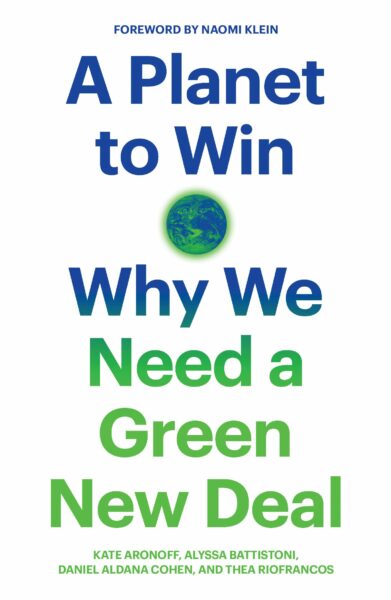
The authors of A Planet to Win respond to what they call a neoliberal “faux Green New Deal” with a radical vision for the Green New Deal. They propose sweeping reforms in the labor, housing, and energy sectors in the spirit of World War II and New Deal era federal government initiatives, reminding us of what was achieved then through mass mobilization and government economic stimulus. At the same time, they identify the economic and political obstacles to achieving such a massive transformation of society today. While the New Deal provides a necessary parallel in terms of scope, the authors stress that the Green New Deal should also address the deep inequalities that exist within our society, especially in regards to Black, Brown, and Indigenous communities.1 The key argument in A Planet to Win is the “reimagination of density”: how to rebuild and achieve a world in balance with nature through the redistribution of resources and through significant overhauls to the housing, transportation and energy sectors. The authors also stress that none of this can take place without mass mobilizations in the form of labor strikes and federal jobs programs.
What sets Pettifor’s book apart from the others is her articulation of what a post-carbon economy will look like. Citing Japan’s economy in the early 2000s, which achieved full employment without an increase in GDP (the standard metric of economic growth), she advances the argument for a steady-state economy that recognizes planetary limits and global economic capacity. Pettifor also tackles the technical details of how to finance the Green New Deal, an aspect largely left unexplored by other authors. She identifies four main sources: monetary credit creation, loan finance, tax revenues, and bonds issued by national banks. In contrast, both Klein and Aronoff et al. propose funding mainly through federal investment and the issuance of bonds through public banks.
In addition to massive public spending programs, Pettifor argues that a reform of monetary policy to “regain public authority” over domestic and international monetary systems is necessary for a global Green New Deal. To restore such regulatory democracy, she argues that, just as Roosevelt broke free of the gold standard in the early 1930s to create the New Deal, the Green New Deal needs to break free of the hegemony of the US dollar through the creation of an international, independent currency. While recognizing that the backlash from the private finance sector would be severe, she believes that if the Green New Deal is implemented through a series of policies rather than as a singular one, it will enable nation states to stand firm in the face of potential backlash.
Not All Green New Deals Are Equal
Capitalists are already poised to exploit the “Green New Deal” movement by excluding social justice issues from climate movements and instead promoting neoliberal solutions. Fossil fuel companies are greenwashing themselves while continuing to block effective climate action. The finance industry is pivoting towards outwardly supporting climate action while continuing to invest in fossil fuel infrastructure and extractive operations. The contradictions of green capitalism are highlighted by Aronoff et al.’s nuanced analysis of lithium extraction in Chile, required for the massive scale-up of renewable energy in the Global North, where both private and state interests are harming Indigenous communities and the ecosystem. These contradictions show the need for any version of the Green New Deal to grapple with questions of extractivism, consumerism, and economic expansion, and to propose alternatives to a growth-centered economy. Any solutions that fail to address these issues are not up to the task of creating a just and sustainable planet.
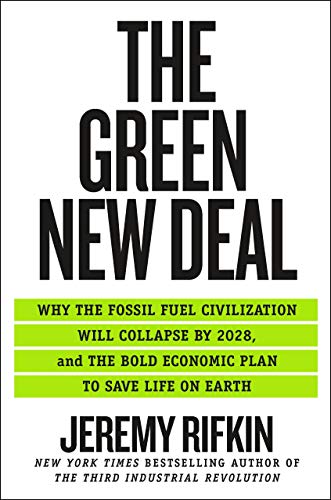
Jeremy Rifkin, an American economist and author, is one of the leading voices proposing market-based solutions to the climate crisis. In his book, The Green New Deal: Why the Fossil Fuel Civilization Will Collapse by 2028, and the Bold Economic Plan to Save Life on Earth, Rifkin portrays a world on the cusp of a Third Industrial Revolution (TIR), bringing together four components of a vastly expanded internet: communication, renewable energy, mobility and logistics, and smart devices and structures. Far from blaming capitalism for the ecological crisis, Rifkin believes that enough corporate leaders see the ecological writing on the wall to bring about these technological transformations, as well as the total conversion to renewable energy sources, on their own initiative. People are listening to his message: TIR was formally endorsed by the European Parliament in 2007 and now is being implemented by various agencies within the European Commission. Additionally, elements of his thinking have been incorporated into China’s thirteenth Five-Year Plan.
For Rifkin, it is the construction of the required infrastructure in a public-private partnership that is the key to addressing the climate crisis. Like Aronoff et al., Rifkin finds inspiration in the massive public spending of the original New Deal. What sets Rifkin’s technology-driven, top-down, market-based Green New Deal apart from Aronoff et al.’s radical Green New Deal is its failure to consider the historical environmental injustices meted out to the working class, especially Indigenous communities and communities of color. Rifkin never speaks of the struggles of ordinary people against a failed system, of the massive mobilization necessary to wrest power from fossil fuel companies and their financiers, of the communities suffering devastation due to the extraction of resources needed for TIR technology, or of the special responsibility of the Global North in addressing the crisis.
For Rifkin, capitalism is critical for this TIR in the twenty-first century just as it was for the industrial revolutions in the nineteenth and twentieth centuries. He believes that the fossil fuel industry will reluctantly accept the fate of its infrastructure as stranded assets and thus shift to increasingly efficient solar and wind technologies, made more attractive by government incentives. The contrast with more radical proposals is stark: there is no enemy, and this is not a “struggle” at all. Through TIR-inspired divestment and investment campaigns, he hopes to “turn Marx on his head,” with “the workers of the world uniting as an army of ‘little capitalists.’” In Rifkin’s view, we should just let the market sort things out, as we sit back and watch it all unfold.
As Klein and the other authors argue, it is just not that simple; we need a whole “new civilizational paradigm.” The struggles ahead of us include confronting simplistic “solutions” like Rifkin’s, which delay genuine solutions in favor of preserving the power of the elites who brought us to this crisis in the first place.2
Another World Is Possible
Even during such dark times, as a pandemic rages across the globe and another possible Great Depression looms, there is a thrilling glimmer of hope in the rise of mutual aid groups, the international solidarity shown by Cuban and Chinese doctors who have treated patients in other countries, and, most importantly, the shattering of the myth that the economy must always come first. All of a sudden, the “pie in the sky” solutions to structural inequalities that the left has been pushing for years, such as ending homelessness, moratoriums on utility shut-offs and evictions, and rent and mortgage payment freezes, are becoming reality—if only temporarily.
Klein, Pettifor, and Aronoff et al. all foreshadow what may be the most crucial lesson of all to be learned from the coronavirus pandemic: that what is thought of as possible is merely defined through political will and organizing. As the late cultural theorist Mark Fisher noted, some find that “it is easier to imagine the end of the world than the end of capitalism.” Perhaps this difficulty lies with the boundaries that neoliberalism imposes on our imagination. The radical “Green New Dream” seems much more realistic now, alongside current demands for a Green Stimulus and a People’s Bailout, than it did a few short months ago.3 With the collapse of the Soviet Union and the rise of globalisation, Francis Fukuyama famously proclaimed the end of history. However, the last few decades, and especially this pandemic, have exposed the fragility of neoliberalism and the fact that the global elite is marching us towards extinction. At this pivotal moment, a radical People’s Green New Deal is our best bulwark against the end of imagination, and against the end of our collective history.
Books Reviewed:
A Planet to Win: Why We Need A Green New Deal
Kate Aronoff, Alyssa Battistoni, Daniel Aldana Cohen, and Thea Riofrancos
Verso Books
2019
208 pages
On Fire: The Burning Case for a Green New Deal
Naomi Klein
Simon & Schuster
2019
320 pages
The Case for the Green New Deal
Ann Pettifor
Verso Books
2019
208 pages
The Green New Deal: Why the Fossil Fuel Civilization Will Collapse by 2028, and the Bold Economic Plan to Save Life on Earth
Jeremy Rifkin
St. Martin’s Press
2019
256 pages
- For more details, see the “Indigenizing the Green New Deal” interview with Dina Gilio-Whitaker in this issue.
- For a more detailed critique of top-down proposals like Rifkin’s, see Belda and Pellicer in this issue.
- People’s Bailout,” People’s Bailout, last modified April 21, 2020, https://thepeoplesbailout.org/; Johanna Bozuwa, J. Mijin Cha, Daniel Aldana Cohen, Billy Fleming, Jim Goodman, Ayana Elizabeth Johnson, Daniel M. Kammen, Julian Brave NoiseCat, Mark Paul, Raj Patel, and Thea Riofrancos, “A Green Stimulus to rebuild our economy,” Medium, March 22, 2020, https://medium.com/@green_stimulus_now/a-green-stimulus-to-rebuild-our-economy-1e7030a1d9ee.



